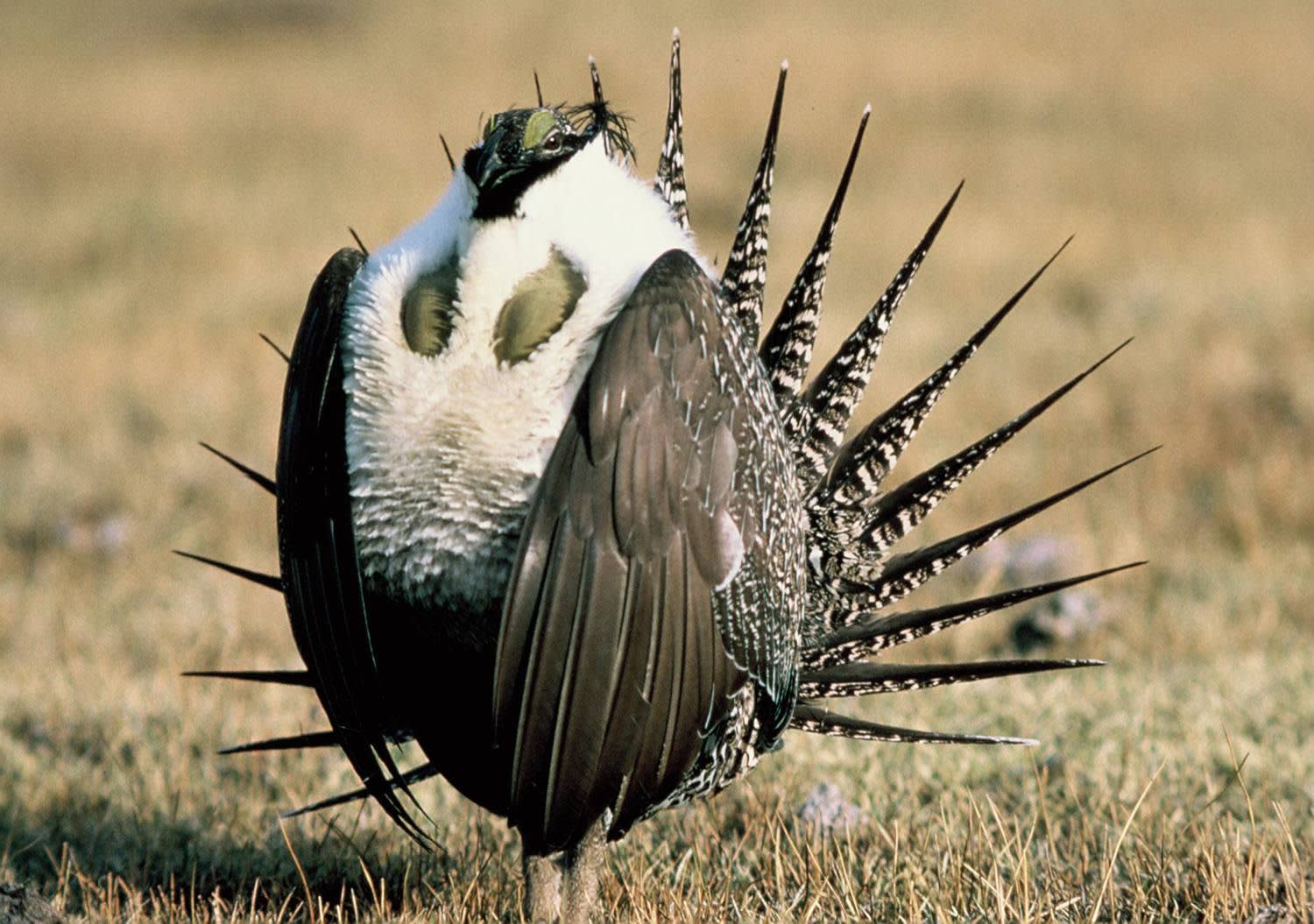Study: Efforts to Preserve Sage Grouse Also Benefit Mule Deer
OutdoorHub Reporters 10.07.14

Researchers have found that conservation efforts for sage grouse in Wyoming may have benefited the local mule deer population as well. Scientists at the University of Wyoming, US Geological Survey, The Nature Conservancy, Western Ecoysystems Inc., and the University of Montana recently published a study confirming “umbrella” benefits stemming from grouse habitat conservation. Many conservationists have long argued that protective measures for sage grouse would benefit other species as well.
“The study results are heartening, because they show that benefits of sage grouse conservation by many private and public stakeholders in Wyoming go even further than we first realized,” Dave Naugle, study co-author and science adviser for the Natural Resources Conservation Service’s Sage Grouse Initiative, said in a press release.
Naugle and his fellow researchers found that the same protective measures meant for sage grouse can benefit up to 350 other species as well, including mule deer. Since Wyoming’s mule deer herds migrate through the same lands now protected by grouse conservation provisions under the state’s core area policy, it means that these migration routes will be similarly protected.
“This study underscores the simple idea that keeping sagebrush habitats intact through Wyoming’s core area policy and conservation easements will have additional benefits for mule deer habitat,” said Holly Copeland, lead author of the paper and a research scientist with The Nature Conservancy. “We are excited by our findings but caution that there are gaps in mule deer conservation, especially outside of core areas, where future development may become more concentrated, potentially resulting in impacts to migrating deer.”
Wyoming’s core area policy is an alternative to what many hunters dread could happen should the grouse population continue to decline: listing under the Endangered Species Act. According to the Wall Street Journal, hunters across eight Western states are taking less and less birds in the hopes that the population could bounce back. If not, it could be one of the last sage grouse hunting seasons for a long time. Earlier this year Montana closed most of its sage grouse hunting across 32 counties. For the state that holds the second largest population of sage grouse in the country, many fear that hunting will close elsewhere across the West.
Many hunters say it is not hunting that is driving the birds’ disappearance, but energy and land development. Biologists agree, and add that habitat protection is the number-one priority when it comes to preserving a bird that has been an icon of the West. From 2008 to 2012, more than $100 million was invested in conservation easements for sage grouse and other species. Montana has since adopted a plan similar to Wyoming’s core area policy, and many states are considering it as well. Some conservationists, however, have criticized Wyoming’s strategy for not doing more to keep energy development out of grouse nesting grounds, and state that listing of the species is all but inevitable.

